Struggling to find clear user insights?
You’re drowning in data, but connecting it to actionable product decisions feels impossible. It’s a common challenge when your tools don’t align with your goals.
Choosing the wrong platform leads to wasted budgets and confusing results, derailing your product roadmap and frustrating your entire team.
This isn’t just a minor hiccup. According to UserTesting, 30% of product failures are tied directly to poor research, costing businesses millions.
The right software changes this entirely. It helps you gain clear, actionable insights, turning raw data into a real strategic advantage for your company.
In this guide, I’ll help you cut through the noise. We’ll explore the best user research software to ensure you choose a platform that fits your workflow.
Beyond just user data, a holistic approach often includes market research. My guide on best market research software provides a comprehensive overview.
You’ll discover how to compare features and integrations, so you can confidently select a tool that delivers measurable value to your business.
Let’s dive in.
Quick Summary:
| # | Software | Rating | Best For |
|---|---|---|---|
| 1 | Dovetail → | Mid-sized product teams | |
| 2 | Maze → | UX researchers & product managers | |
| 3 | Hotjar → | Website owners & UX teams | |
| 4 | dscout → | Researchers needing participant management | |
| 5 | UserZoom → | Startups to large enterprises |
1. Dovetail

Tired of endless data overwhelming your research efforts?
Dovetail’s AI-native software turns customer interactions into instant insights. This means you can stop manually analyzing data and focus on building great products for your users.
Their platform and agentic chat automatically transform conversations, documents, and surveys into actionable insights, helping you uncover important themes without tens of hours of manual analysis.
This enables instant access to the intelligence you need.
Dovetail helps you build better products with continuous customer intelligence. Here’s how it solves your research challenges.
The Projects feature automatically turns raw customer data into actionable reports at light speed, empowering your team with instant access to the voice of your customer where they work. Plus, you can chat directly with your data for instant, cited answers from interviews, calls, and documents, regardless of the context.
Additionally, the Channels feature continuously organizes messy product feedback, like support tickets and reviews, alerting you to problems and tracking trends in real-time. This ensures your future work isn’t redundant, while the Recruit tool easily finds and tracks research participants.
The result is a unified customer intelligence hub.
Key features:
- AI-powered analysis: Automatically transforms customer conversations, documents, and surveys into actionable insights and reports at light speed, reducing manual workload.
- Centralized insights hub: Consolidates all customer feedback, including support tickets and reviews, into one place, ensuring consistency and accessibility for your entire team.
- Participant recruitment & management: Easily find and track research participants from over 3 million verified consumers and professionals, streamlining your research projects.
Dovetail features, pricing, & alternatives →
Verdict: If you’re seeking to integrate feedback seamlessly and get actionable insights without extensive training, Dovetail stands out as the best user research software. Its AI-powered automation and centralized repository can deliver a reported 236% ROI, accelerating your time to insight.
2. Maze
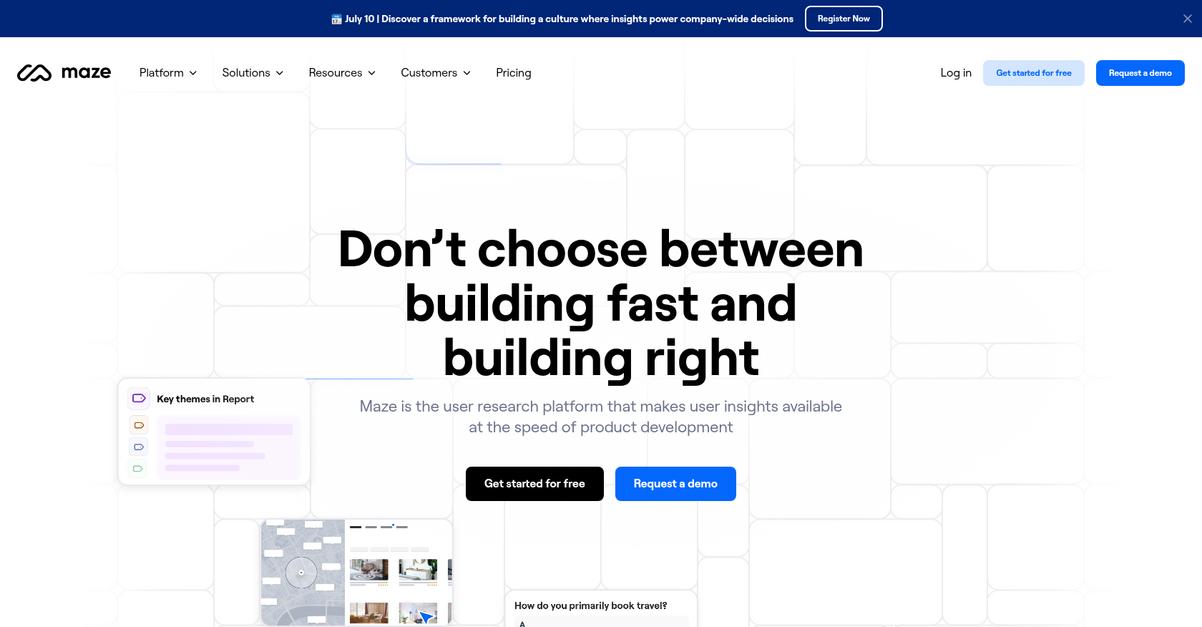
Struggling to find actionable user insights quickly?
Maze offers an intuitive platform designed to streamline your user research process.
This means you can accelerate your time to insight, gathering feedback efficiently from ideation through to production.
Here’s how to gain clear insights.
Maze solves the challenge of information overload by providing a unified platform for diverse research needs. You can recruit the right participants effortlessly and conduct research autonomously. This helps you get from design to decision faster by validating prototypes and understanding user behavior before committing development hours.
Additionally, Maze’s AI-moderated interviews allow you to run hundreds of interviews across time zones while you focus on analysis, turning conversations into trusted insights. The platform also generates automated, ready-to-share reports, eliminating manual work and ensuring your insights drive decisions. Plus, detailed path analysis and visual heatmaps reveal where users struggle, ensuring better product outcomes.
The result is building influence and alignment with stakeholders by providing key evidence for your recommendations.
If you’re also looking into broader project management, my article on 5+ Best Jobsite Management Software covers how to keep projects on time and budget.
Key features:
- AI-moderated interviews: Conduct automated interviews at scale, gathering real-time insights from global users 24/7 without needing to manage calendars or scheduling details.
- Automated reporting: Generate ready-to-share reports, including automated transcripts and AI-powered summaries, to synthesize insights faster and drive decisions based on user data.
- Prototype validation: Test usability across your prototypes with real users before development, capturing continuous input and understanding expected and unexpected user behavior with visual heatmaps.
Maze features, pricing, & alternatives →
Verdict: If you’re a UX researcher or product manager needing the best user research software that delivers actionable insights without extensive training, Maze is an excellent choice. It streamlines recruitment and analysis, ensuring faster turnaround times and improved product-market fit.
3. Hotjar
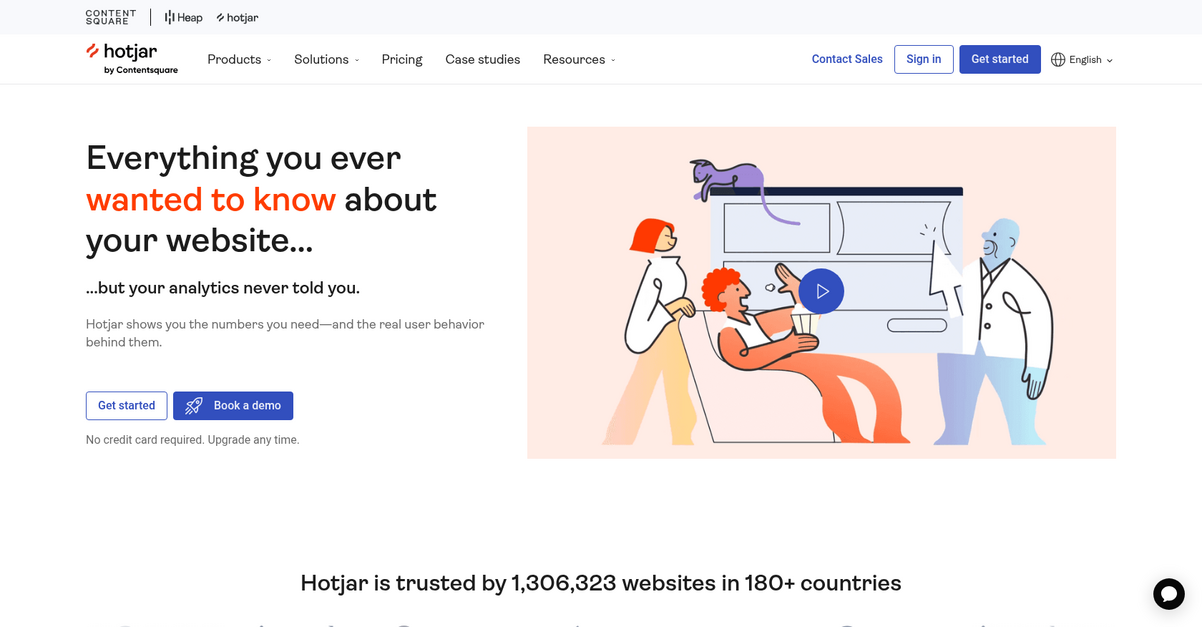
Struggling to truly understand your website visitors?
Hotjar helps you move beyond basic analytics, revealing the “why” behind user actions. This means you can understand the real user behavior behind the numbers.
It allows you to spot problems with your customer experience, like why people bounce before completing critical actions. The result is deeper insights into how users actually interact with your site.
Here’s how Hotjar helps you uncover optimization opportunities.
With Hotjar, you can observe user behavior directly through Heatmaps and Recordings. Heatmaps show you ignored page sections and elements driving conversions, while Recordings let you watch real user sessions to find and fix friction points. Additionally, you can “Ask” users directly using Feedback tools and Surveys to validate plans, measure satisfaction, and learn from churn, bringing the customer voice into your decision-making. Plus, its Interviews feature allows 1-to-1 connections for testing hypotheses, refining designs, and iterating ideas faster.
You can truly understand user needs.
If you’re also looking into website optimization, my article on best ecommerce analytics tools can provide further insights.
Key features:
- Heatmaps and Recordings: Visualize user engagement to see which content gets ignored and watch actual user sessions to identify hidden friction and conversion blockers.
- Feedback and Surveys: Directly gather user opinions about what they love and what drives them away, helping you validate plans and measure satisfaction effectively.
- User Interviews: Connect live with users to test hypotheses, refine designs, and iterate on new ideas quickly, ensuring your product changes are user-validated.
Hotjar features, pricing, & alternatives →
Verdict: If you’re a UX researcher or product manager seeking the best user research software, Hotjar offers a unified platform to observe, ask, and engage with users. This helps you move past assumptions and make changes that truly matter, as seen with HubSpot Academy boosting signups by 10% using its Survey tools.
4. dscout
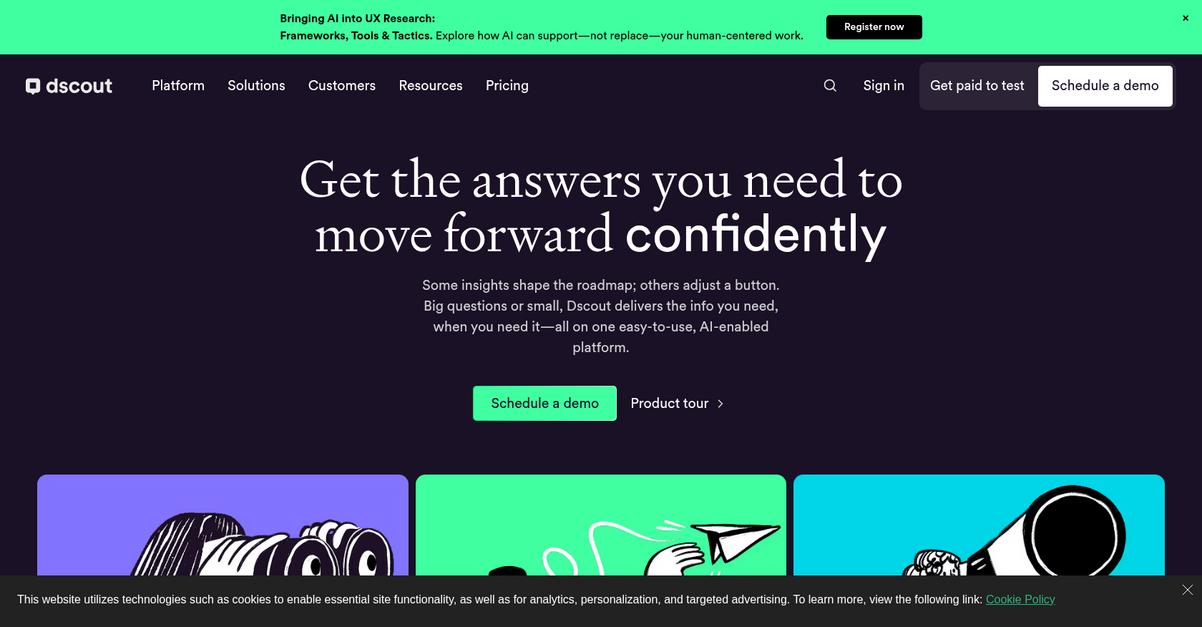
Struggling with user research tool overload? I feel you.
Dscout offers one efficient, AI-enabled platform to gain clear insights and confidently move forward. This means you can get the answers you need, when you need them.
You can recruit from Dscout’s vetted “Scout” pool or bring your own users, helping you access relevant, engaged participants for your studies.
Here’s how you can make decisions confidently.
Dscout handles the administrative tasks like scheduling, reminders, and payments, allowing you to focus on getting answers with ease. You can run various research methods, including usability testing, concept testing, and diary studies, all within a single platform.
The platform provides powerful tagging features, AI analysis, and a playlist builder to extract the insights you need to make progress. This enables you to validate designs, understand user behaviors in their natural environments, and evaluate information architecture. Plus, Dscout AI offers features like summaries and AI Themes to deliver faster insights for your product development.
The result is actionable data for improving product-market fit.
Beyond user research tools, consider how HR mobile apps software can empower your teams and unify their data management.
Key features:
- Participant Access: Recruit from Dscout’s vetted “Scout” pool or integrate your own users with easy invite links for diverse and relevant participant recruitment.
- Research Administration: Automates scheduling, reminders, and payments, allowing you to focus on conducting research without administrative burdens.
- AI-Powered Analysis: Utilizes AI for summaries and theme identification, along with powerful tagging and playlist builders, to extract insights efficiently.
dscout features, pricing, & alternatives →
Verdict: Dscout is a strong contender for the Best User Research Software, offering a comprehensive platform that addresses key pain points like participant recruitment and administrative overhead. Its AI capabilities and diverse research methods empower you to confidently move from insights to action, as demonstrated by leading companies trusting Dscout for their research needs.
5. UserZoom
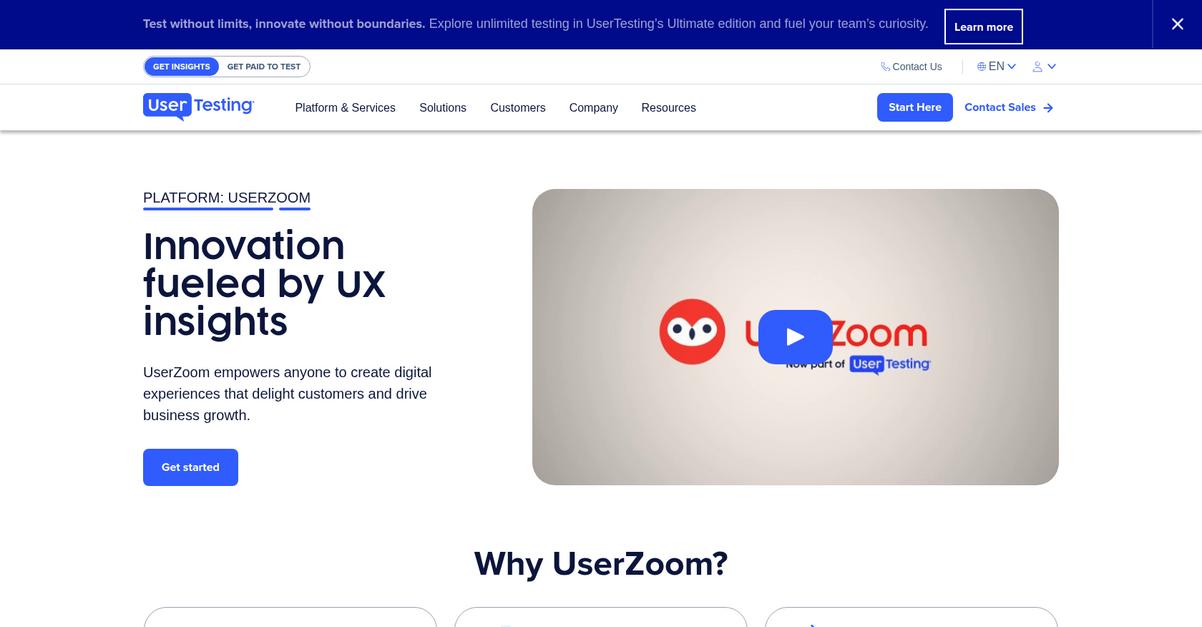
Struggling with fragmented user insights across various tools?
UserZoom’s comprehensive platform offers extensive testing capabilities, streamlining your research process. This means you can integrate usability testing, surveys, and information architecture tests all in one place, avoiding tool overload.
You can easily identify key insights and measure performance, saving your team significant post-test analysis time. This simplifies data interpretation for faster, more confident product decisions.
Here’s how to gain clear insights.
UserZoom solves these challenges by empowering your team to capture human insight throughout the entire product development lifecycle. You can quickly fill studies with high-quality participants from a global network, thanks to a machine-learning-powered distribution engine that finds the right audiences using over 200 demographic filters.
This platform lets you design studies, recruit target audiences, and then seamlessly launch and schedule them. It provides automated insights with features like transcripts, synced playback, timestamped notes, and auto-generated charts, accelerating your analysis. Additionally, you can easily evangelize insights across your organization using video clips, highlight reels, and quotes, turning data into impactful user stories.
This flexibility supports various use cases, from testing ideas and prototypes to full websites and campaigns, allowing your product managers to de-risk investment decisions and your UX researchers to make research faster and more inclusive. Plus, it scales with your business, whether you’re an early-stage startup or a large enterprise, with plans to meet diverse team needs.
UserZoom helps you differentiate with user-loved designs.
Key features:
- Comprehensive testing capabilities: Test everything from early ideas and designs to prototypes, websites, and campaigns, with a wide range of methods like usability testing and surveys.
- Automated insights & visualizations: Accelerate your analysis with automated transcripts, synced playback, timestamped notes, and auto-generated charts to quickly identify key insights.
- Targeted audience recruitment: Access a global network of participants and utilize over 200 demographic filters to quickly recruit the exact audience you need for your studies.
UserZoom features, pricing, & alternatives →
Verdict: UserZoom distinguishes itself as a robust solution for the best user research software, allowing your team to conduct comprehensive testing, analyze insights with automated tools, and recruit specific audiences. TrustRadius also recognized it with a Best of 2025 Award, highlighting its end-to-end capabilities for product managers and UX researchers.
6. Qualtrics
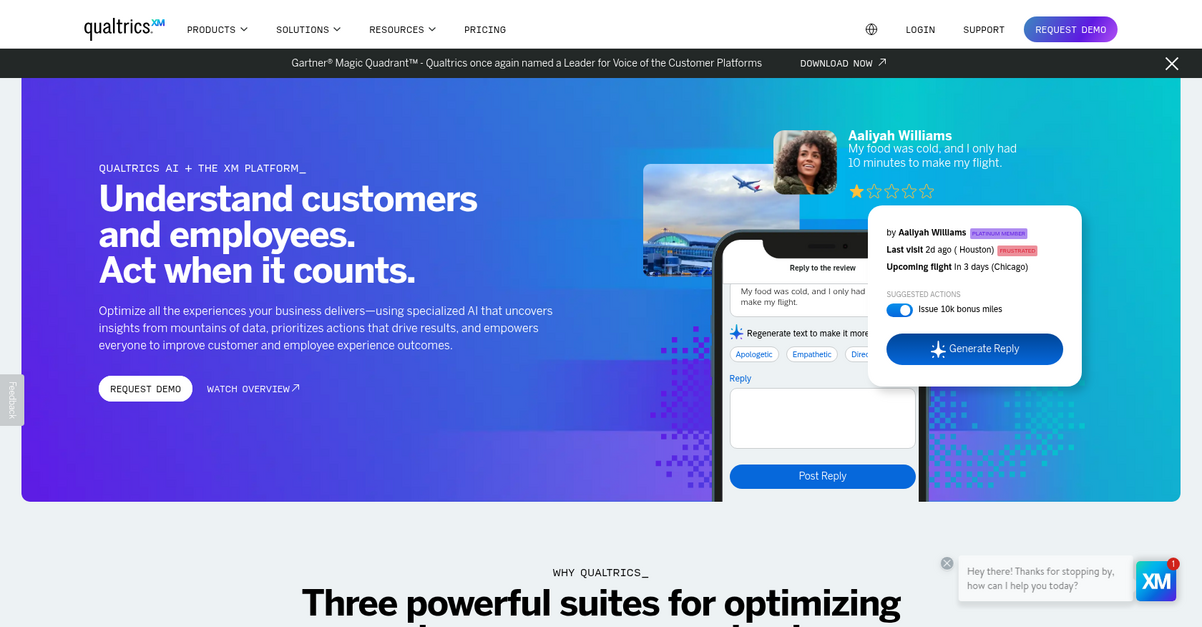
Struggling to compare user research solutions?
Qualtrics helps you understand customers and employees, then act when it counts to optimize experiences.
Their specialized AI uncovers insights from vast amounts of data, helping you prioritize actions that drive real results. This means you can move past analysis paralysis.
Here’s how to gain clear insights.
Qualtrics offers powerful suites specifically designed for optimizing experiences across your business, including customer, employee, and strategy & research. This allows you to integrate feedback directly into your product development cycle.
You can design products people love and accelerate growth through their dedicated User Experience Research capabilities. This is critical for improving product-market fit with reliable user data, addressing your team’s core needs. Additionally, features like Digital Experience Analytics and Website & App Feedback ensure you capture every touchpoint, providing a holistic view of user behavior and sentiment.
The result? Better experiences across all digital and physical interactions.
Key features:
- Specialized AI: Uncovers insights from vast data, prioritizing actions to improve customer and employee experience outcomes, reducing information overload for your team.
- UX Research Capabilities: Specifically supports user experience research to help you design products people love, increasing market share and accelerating growth.
- Omnichannel Experience Management: Gathers feedback from every digital and physical touchpoint, providing comprehensive data for actionable insights and persona validation.
Qualtrics features, pricing, & alternatives →
Verdict: Qualtrics positions itself as a strong contender for the best user research software, especially for UX researchers at mid-sized tech companies. Its AI-powered insights, dedicated user experience research features, and omnichannel feedback collection capabilities are perfect for delivering actionable insights and integrating seamlessly with your existing product and design workflows, as evidenced by major brands like Porsche.
7. Lyssna
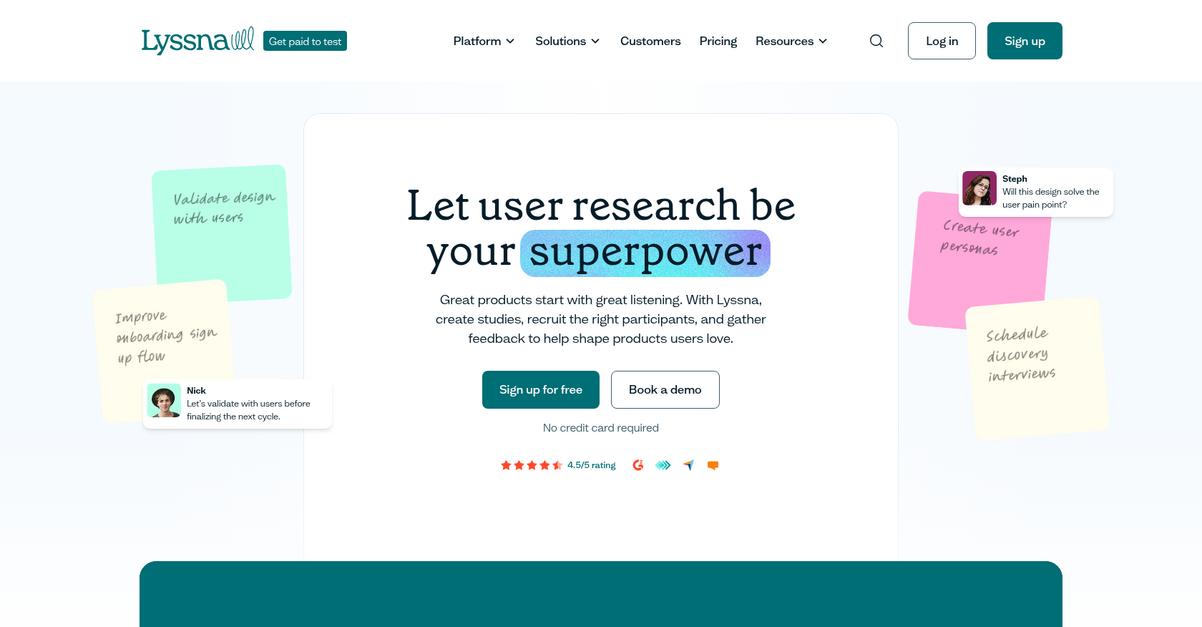
Tired of user research tool overload?
Lyssna offers an all-in-one platform for conducting moderated interviews, unmoderated tests, and surveys to gather valuable user feedback. This means you can uncover valuable feedback about user behavior, needs, and experiences without juggling multiple systems. You’ll gain the clarity needed to make confident, user-driven product decisions.
Here’s how Lyssna can transform your research workflow.
Lyssna helps you recruit the right participants instantly by offering access to a panel of 690,000+ vetted B2B and B2C participants. You can filter by over 395 attributes, which means you can target your ideal audience with precision. Additionally, the [platform integrates with Zoom], Outlook, Microsoft Teams, and Google Calendar for effortless interview scheduling and management.
Plus, you can unlock research at scale with unmoderated tests and powerful survey tools, choosing from a variety of methodologies or combining approaches in a single study. The result? You’ll transform collected data into actionable insights, driving impactful strategies faster.
Speaking of transforming data into actionable insights, you might also find value in my guide on Best Blockchain Analysis Tools.
Key features:
- Comprehensive Study Creation: Create moderated interviews, unmoderated tests, and surveys to capture diverse user feedback efficiently, all within one integrated platform.
- Targeted Participant Recruitment: Access 690,000+ vetted B2B and B2C participants, filtering by 395+ demographic and psychographic attributes for precise audience targeting.
- Seamless Workflow Integration: Integrate with tools like Zoom, Outlook, Teams, and Figma to streamline scheduling, manage interviews, and analyze feedback effortlessly.
Lyssna features, pricing, & alternatives →
Verdict: Lyssna stands out as a strong contender for the best user research software, allowing you to move fast and learn faster. Its ability to combine study creation, participant recruitment, and data analysis in one unified platform makes it ideal for product teams seeking actionable insights and faster iteration cycles.
Conclusion
Still drowning in user data?
Choosing the wrong tool wastes your budget and leaves your team with confusing results. This decision paralysis is a common struggle for UX researchers.
But the right tools deliver huge wins. Fortune Business Insights reports 40% faster decision-making with structured UX platforms. This directly impacts your product roadmap and reduces development costs.
So what’s my top recommendation?
From my experience, Dovetail stands out. It’s built to turn raw customer feedback into clear, actionable insights your entire team can use.
While optimizing user journeys, understanding the best digital adoption platform is also crucial for seamless onboarding.
Its AI-native platform automates the heavy lifting of analysis, freeing your team for strategy. Using the best user research software like this gives you a real competitive edge.
I highly recommend you get started with Dovetail for free. See for yourself how it can transform your team’s workflow.
You’ll build better products, faster.






